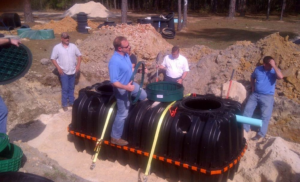Duluth Motorcycle Accident Lawyer can help you recover the compensation you deserve for your injuries and losses. They can assist you in navigating the complex legal process and ensuring that your rights are protected throughout the process.
They will ensure that you do not lose the right to sue by missing any applicable statute of limitations (SOL). They can also provide invaluable assistance in proving your losses, including medical costs and lost wages.

A motorcycle accident attorney can help you through the entire legal process and provide expert guidance when navigating difficult court proceedings. Their experience in similar cases helps them develop effective strategies to fight for you and your rights. They can also leverage relevant case law and legal precedents to strengthen your case.
The first step in building a strong insurance claim is collecting as much evidence as possible. This includes scene photos, police reports, medical records, eyewitness comments, and more. A lawyer will assemble all of this information to prove liability and your losses.
Once your lawyer has the necessary information, they will file insurance claims. They will work to obtain maximum compensation for your economic and non-economic damages. This may include medical expenses, lost wages, cost of repairing or replacing your bike, and more.
They will also seek punitive damages in some cases. These are designed to punish the at-fault party and serve as a deterrent against future misconduct. An experienced attorney can use relevant case law and legal precedents to argue in favor of punitive damages for you.
While it is rare, some accidents are so egregious that they can’t be compensated through the typical forms of compensation. In these situations, it is possible to pursue additional forms of compensation. These include wrongful death damages, which are awarded to surviving family members of the victim, and civil conspiracy, which is an award that can be given to victims who were injured due to a group of individuals working together against them.
One of the most important parts of a motorcycle accident claim is proving fault. This involves establishing that the defendant owed you a duty of care, and then demonstrating that they breached this duty by causing your accident. It also involves proving causation, which is the direct link between the breach of duty and your injuries. Having a skilled motorcycle accident lawyer by your side can help you make this connection in the eyes of the judge or jury. They can also take care of all communication with the insurance company so that you can focus on your recovery.
Expert Witnesses
Expert witnesses help bolster the evidence that supports your claim for compensation. They can provide valuable insight into how your accident occurred, which helps you establish liability and damages. They can also help you build a strong case against the other party, especially if they are seeking to avoid paying your full amount of damages. An experienced motorcycle accident attorney will have a pool of qualified experts they regularly work with, so you can rest assured that they will be able to bring in the best possible expert witness for your case.
There are many different types of expert witnesses, and each one has their own specialized field. However, each field can still be used to strengthen your claim. For example, an accident reconstruction expert can use the evidence of your crash to paint a picture of how your accident happened and who was responsible for it. They can even create computer reenactments of your accident for the jury to see in court, which can be a powerful piece of evidence.
In addition to accident reconstruction, an expert witness can also help you prove the extent of your injuries. They can give a detailed account of your medical treatment, prognosis and impairment ratings. They can also testify to the financial costs associated with your accident, including past and future losses. This can be important, as it can help a jury understand the impact of your injuries and why you deserve high damages.
A safety expert can examine your bike and compare it to industry standards to determine if there was a product defect that contributed to the accident. They can then explain how that defect could have been prevented. They can also testify about the negligence of a manufacturer or repair company who may have been liable for the accident, depending on the circumstances.
The defense is going to scrutinize the expert witnesses you bring in, so it’s crucial that they have a solid track record. The expert witness must be able to answer questions from the opposing counsel that are based on their specialized expertise and knowledge of your accident.
Insurance Claims
As a victim of an accident, you should be compensated for the harm you have suffered, including medical bills and lost wages. A skilled motorcycle accident lawyer can file claims and negotiate with insurance companies on your behalf so that you receive the compensation you deserve.
A motorcycle accident lawyer will help you build a strong case by gathering evidence and preparing legal documents. They will also work to secure expert witness testimony in support of your claim. This can include medical personnel who can testify about your injuries, police officers who can provide information from their investigation, and engineers who can explain how something malfunctioned.
In addition to filing claims and negotiating with insurance companies, your attorney will conduct a thorough investigation into your crash. This includes reviewing all available documentation, conducting interviews with witnesses, and analyzing physical evidence at the scene of the accident. This can prove vital in determining fault for the accident and maximizing your potential recovery.
The most important part of a motorcycle accident case is proving your damages. Your lawyer will be familiar with the types of economic and non-economic damages you may be eligible to recover, such as loss of income, medical expenses, property damage, and pain and suffering. They will also know what to expect in terms of settlement negotiations with insurance companies, allowing them to fight for your maximum award.
One of the most common mistakes that people make after a motorcycle accident is failing to seek immediate medical attention for their injuries. This can lead to delays in treatment, lower settlement amounts, or even a denial of your claim. Your lawyer will ensure that you get the medical care you need as quickly as possible and document your injuries to strengthen your claim for compensation.
Another mistake that people make is accepting the first settlement offer from an insurance company. This is often not enough to cover your medical bills and other damages. Your lawyer will review your claim and fight for a higher settlement amount that takes into account your current and future needs.
Free Consultation
A good motorcycle accident lawyer will provide a free consultation that includes an assessment of your injury and a discussion about how you can recover damages from the responsible party. They can review all relevant documentation including police reports, witness statements, medical bills, and other information related to the accident. Additionally, they can help you file paperwork and negotiate with insurance companies. They can also help you get the compensation you deserve for your medical expenses, property damage, loss of income, and other economic losses. They can even assist with pursuing non-economic damages such as pain and suffering.
They can also utilize expert witnesses to strengthen your case. For example, engineers or accident reconstruction experts might be needed to prove the cause of the crash. A specialized attorney will know when to call in these professionals and how to best use their insights to your advantage. Additionally, a lawyer that understands motorcycling can work with mechanics to prove how road damage like potholes contributed to the accident.
A seasoned motorcycle accident lawyer can also help you deal with insurance company harassment by shielding you from their questions and false accusations. Additionally, they can file appeals if the insurer denies your claim for compensation.
Before you decide to hire a lawyer, ask about their experience and the success rate of their previous cases. Also, make sure that they have a good communication schedule. If they don’t, you might be left waiting for days or weeks to hear any updates.
It’s important to contact a lawyer as soon as possible after your accident. If you wait too long, you might miss out on a chance to recover the maximum amount of compensation available for your injuries. It’s also important to keep in mind that you only have three years to file a lawsuit, which is known as the statute of limitations. The sooner you speak with a motorcycle accident lawyer, the better your chances of maximizing your settlement. Contact us today to schedule a free consultation and find out how we can help you with your claim.








